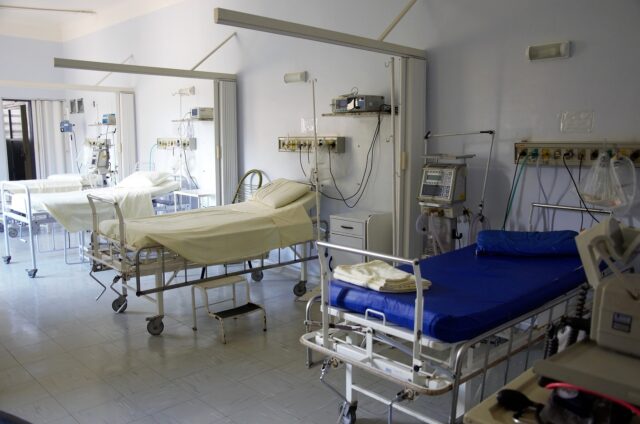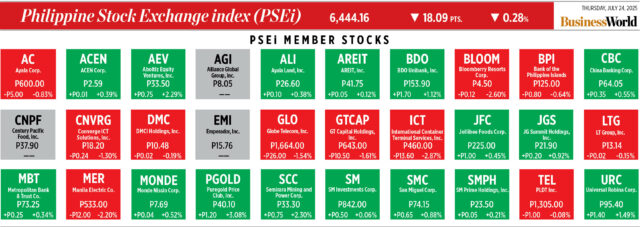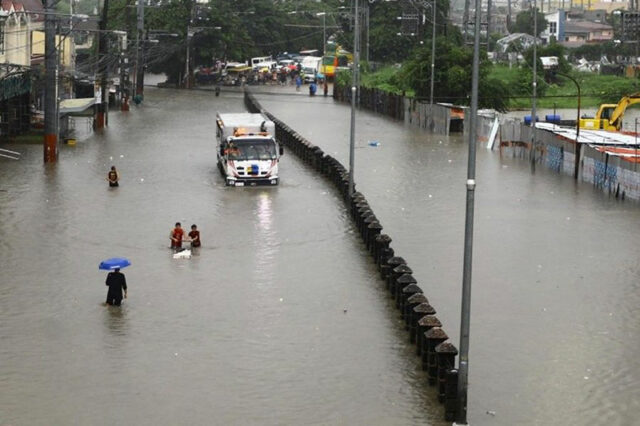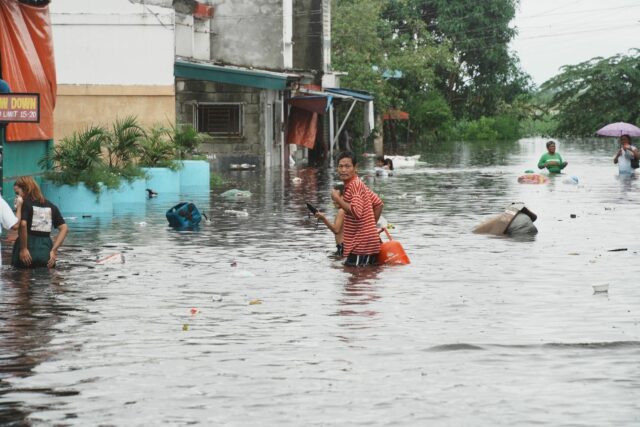PAGCOR first-half gross gaming revenue hits P215B

THE Philippine Amusement and Gaming Corp. (PAGCOR) said on Thursday that gross gaming revenue (GGR) hit P215 billion in the first half.
“Of the P93.36 billion generated by the integrated resort casinos, P16 billion was paid to PAGCOR as license fees, ensuring funding for government social services and driving the country’s economic growth,” PAGCOR Chairman and Chief Executive Officer Alejandro H. Tengco said in a speech during the Philippine Hotel Connect 2025 event.
GGR was 26% higher year on year.
Integrated resorts revenue fell 5.86% from a year earlier.
As the online gaming comes under attack from supporters of stricter regulation, the outlook for integrated resorts remains bullish, industry officials said.
“I would say there is natural or organic demand for an online gaming experience,which is complementary to bricks-and-mortar gaming demand,” Gregory Francis Hawkins, president and chief operating officer of Bloomberry Resorts Corp. said at a panel discussion.
Mr. Hawkins sees a likely reduction in the contribution from the junket segment, with the mass-market and premium mass-market both growing slightly.
Jeffrey Rodrigo L. Evora, president and chief operating officer of Winford Resort & Casino Manila said his company is partnering with a junket operator to grow its VIP segment.
“We’re very excited about this mainly because we’ve never had a VIP market. We are really mass, premium mass, but the advantage of having this is that the segment is less volatile,” Mr. Evora said. — Aubrey Rose A. Inosante
Davao bus project targeted for pilot operations in 2027
THE Department of Transportation (DoTr) said it hopes to launch pilot operations for the Davao Bus project in 2027.
In a statement on Thursday, Transportation Secretary Vivencio B. Dizon said the pilot will cover the Catalunan Pequeño-Ulas-Bangkal-Matina-Bankerohan-Quirino-Bajada-Lanang-Buhangin-Sasa routes.
The DoTr said it is also launching the Davao Bus Driving academy to help staff with the 672-kilometer Davao Bus project.
The Davao Bus project, or the Davao Public Transport Modernization Program is valued at P73.38 billion, funded by loans from the Asian Development Bank (ADB) and the government.
The DoTr has said that it was targeting to operate the Davao Public Transport Modernization project by 2026.
The project is designed around a core service lane connecting major commercial centers; feeder routes to inner urban areas; and links between outer rural areas and terminals in Davao City.
The project has three main components — the establishment of a high priority bus system; the strengthening of institutional capacity to execute the project; and the delivery of social development programs.
The project is a network of over 100 kilometers of core routes and more than 500 kilometers of feeder routes.
In April, the DoTr bid out the contract for the project’s general administrative consultancy services. — Ashley Erika O. Jose
Hotel industry urges traveler-safety focus in promoting PHL destinations
THE HOTEL industry said the Philippines needs to be actively positioned as a safe destination, noting the negative impact of safety rankings that portray the Philippines as unsafe.
“I think we also need to work with the government on a concerted effort in reintroducing the Philippines to all of our key markets, reminding everybody why we are different from Thailand, from Indonesia, and from the rest,” Francis Nathaniel C. Gotianun, senior vice-president at Filinvest Hospitality Corp., said during Philippine Hotel Connect 2025, organized by the Philippine Hotel Owners Association, Inc. on Thursday.
HelloSafe released findings based on travel insurance data designating the Philippines as “the latest safe country on the planet,” but later withdrew the results of its study pending a review of its methodology.
Mr. Gotianun noted that the report negatively affected the hospitality industry.
“Of course we want to tell people, ‘Yes, you have to be careful but we need to put things in perspective,’ and we have a duty as you know leaders in our various areas to take that up and make sure that the right messages get out,” he added.
To attract more visitors, the hospitality industry must put the spotlight on the uniqueness of the Philippines, according to Ayala Land Hospitality Creative Director Paloma Urquijo Zobel De Ayala.
“Instead of… always chasing world-class, let’s just be exceptionally Filipino,” she said at a panel discussion during the event.
She also cited the need for more visitor options within driving distance from Manila. — Beatriz Marie D. Cruz
Employers warned against coercing workers to show up despite flooding
By Adrian H. Halili, Reporter
LABOR analysts said extreme weather events are a threat to safety and warned employers not to pressure staff to show up during episodes of flooding.
“The recent floods are more than a weather crisis — they are a workers’ crisis. Flooding disrupts livelihoods, threatens physical safety, and exacerbates health risks. Government workers and private employees alike should not be coerced into unsafe work conditions,” Sentro ng mga Nagkakaisa at Progresibong Manggagawa Secretary-General Josua T. Mata said via Viber.
Mr. Mata proposed that the government adopt a protocol that designates certain events as hazardous, setting in motion a process that authorizes paid leave or remote work.
“Workers must not be forced to risk their lives getting to work. Having the capacity to issue timely warnings would need the government resuming full support for systems like Project NOAH’s hazard mapping,” he said.
He cited the need for hazard pay to be expanded and institutionalized.
“The government response for workers should not be about emergency relief alone — but about building systems that prioritize worker safety, decent work conditions, and climate-resilient communities,” Mr. Mata said.
The southwest monsoon, in conjunction with storms entering the Philippine Area of Responsibility brought heavy rains that flooded large portions of the Philippines this week, including the capital region.
Maria Ella Calaor-Oplas, an economics professor specializing in human capital development research at De La Salle University, said via Messenger chat that the government must enhance the system of worker protections during weather disturbances.
She added that industries must resort to work from home arrangements during extreme weather disturbances.
“In order for online or WFH set up to be effective, government should heavily invest in infrastructure… ensuring that everyone is reached with quality internet,” Ms. Oplas said.
Benjamin Velasco, assistant professor at the UP Diliman School of Labor and Industrial Relations called on Department of Labor and Employment (DoLE) to enforce Republic Act 11058 or the Occupational Safety and Health Standards Law, which grants workers the right to reject unsafe work conditions.
DoLE’s Labor Advisory No. 17 of 2022 allows employers and business establishments to keep workers home “not only due to imminent danger in the workplace, but also during weather disturbances.”
“It seems not to apply to hazardous journeys to work. Since the government gives private sector employers the right to suspend work, the government must encourage them to be liberal and allow workers not to report for work if the latter deem it unsafe,” Mr. Velasco said via Messenger chat.
“Otherwise, employers can provide accommodations like shuttles or places to stay and/or sleep in the workplace,” he added.
SES in talks to bring satellite telco coverage to rural areas
SATELLITE communications provider SES said it is in talks with telecommunications firms in the Philippines to bring direct-to-device services to close the connectivity gaps in rural areas.
“We’re now understanding where we could deploy this service, maybe in the Mindanao region where there are internet connectivity gaps,” Harsh Verma, vice-president of sales for the Asia-Pacific, said at a virtual media briefing on Thursday.
Mr. Verma said that the company is in talks with PLDT Inc.’s Smart Communications, Inc. unit; Globe, Inc.; and DITO Telecommunity Corp.
“We’re trying to get into the mainstream of 4G and 5G deployments in rural areas, bring direct-to-device capability into Philippines,” he said.
Instead of carriers putting up infrastructure, Mr. Verma said SES can use satellites in Medium Earth Orbit (MEO), a region of space that allows sufficiently high enough data transmission rates.
“So they basically send the traffic to our O3b mPower satellite, and we just have one O3b mPower Gateway doing not only Medium Earth Orbit but also bringing the direct-to-device capability using the same infrastructure,” he said.
SES recently launched its ninth and tenth O3b mPower satellites using a SpaceX Falcon 9 rocket.
In 2023, SES conducted a test of its MEO satellite system with the Department of Information and Communications Technology (DICT), which delivered connectivity speeds of 500 Mbps (download) and 80 Mbps (upload).
“We have deployed this commercially for six months and now we’re looking with working with DICT for a long-term deployment,” Mr. Verma said. — Sheldeen Joy Talavera
PHL corn output seen rising on improved pest controls
PHILIPPINE CORN production was projected at 8.30 million metric tons (MMT) in marketing year (MY) 2025/26 due to improved containment measures against the fall armyworm (FAW) pest and stable demand from the feed sector, according to the US Department of Agriculture (USDA).
Citing its Foreign Agriculture Service post in Manila, the USDA said its forecast for MY 2025/26, if realized, would exceed its 8.20-MMT corn output projection for MY 2024/25.It also noted the impact of a less intense dry season in 2025 and “increased technical knowledge of farmers in handling the fall armyworm.”
“Farmer contacts report that compared to the previous calendar year, they have gained technical expertise in handling FAW, specifically by using corn varieties which were identified to be more FAW-resistant,” it added.
The USDA also forecast an increase in the area to be harvested of 2% to 2.55 million hectares in MY 2025/26, against the adjusted estimate for MY 2024/25 of 2.50 million has.
The Philippine Statistics Agency reported that corn production in the first quarter of the calendar year hit 2.40 MMT, against the year-earlier output of 2.53 MMT.
The USDA said corn consumption in the Philippines will hit 10 MMT due to increased demand for feed corn from the poultry, pet food, and aquaculture industry, alongside continuous demand for corn-based snacks.
Meanwhile, the USDA also increased its consumption estimate for MY 2024/25 by 1% to 9.90 MMT.
“Industry contacts report that the African Swine Fever (ASF) remains a challenge in the country, affecting total feed demand,” the USDA said.
“However, those involved in feed milling report that the increased feed requirements from the expanding poultry and layer industries, along with pet food and aquaculture, are outpacing the decline in feed corn demand from the swine industry,” it added.
It said most farmers still prefer producing yellow corn over white corn due to its higher marketability for feed use.
It also noted a gradual increase in the use of white corn by snack manufacturers.— Kyle Aristophere T. Atienza
2024 healthcare spending rises to 5.9% of GDP

HEALTH spending as a proportion of the economy rose to 5.9% in 2024 as overall spending rose to its highest level in three years, the Philippine Statistics Authority (PSA) reported on Thursday.
Citing preliminary data, the PSA said the share of national health expenditure to GDP had been revised 5.5% in 2023.
The 2024 reading was the highest since the 6.4% posted in 2021.
The increase in health expenditure was driven by higher household incomes, improved employment conditions, and increased prices of medical goods and services, Michael L. Ricafort, chief economist at Rizal Commercial Banking Corp., said via e-mail.
Also, factors were the modernization of medical facilities in more parts of the country by both the private sector and by the government, he said.
He added that public health programs benefited from increased funding to support indigent patients.
In 2024, health expenditures rose nearly 19% to P1.44 trillion, against the revised P1.21 trillion in 2023.
Gross health capital formation expenditure rose 1.7% to P121.47 billion in 2024.
This brought total health spending growth to 17.1%, the highest since the 22% posted in 2021.
Government schemes and compulsory healthcare financing schemes accounted for 44.7% of expenditure in 2024, or P643.12 billion. This was 29.5% higher year on year.
Households accounted for 42.7% of the overall spending bill at P615.16 billion, up nearly 12%.
Voluntary healthcare schemes accounted for 12.6% of the health bill in 2024 at P181.12 billion, up 8.9%.
On a per capita basis, health expenditure rose 17.6% to P12,751 in 2024.
Hospitals received 39.2% of healthcare expenditure or P564.43 billion. Retailers and other providers of medical goods accounted for 31.5% at P453.88 billion, while providers of healthcare system administration and financing took in 9.2% or P132.60 billion.
Mr. Ricafort said that growth trends in healthcare expenditure has been consistent in recent periods and will extend to the coming years “as healthcare is one of the priority expenditures by individuals, households, government, and other institutions.” — Matthew Miguel L. Castillo
Chairman Lee, other officers take charge at FPI
THE Federation of Philippine Industries (FPI) said on Thursday a new set of officers has taken charge of the group, led by new chairman Elizabeth H. Lee. In a statement, the FPI said Ms. Lee is “a pioneering figure in automotive and advanced manufacturing, known for her commitment to sustainability, innovation, and inclusive growth.” She becomes the first female FPI chairman.
It said former chairman Jesus L. Arranza has been appointed chairman emeritus.
The group also announced the election of John Reinier Dizon as the organization’s president.
“(He is) a respected industry leader dedicated to local manufacturing and close collaboration with both government and business sectors,” the FPI said.
The FPI will be convening Business Summit 2025 on Oct. 8 at the Manila Polo Club. Among the expected guests at the event are Trade Secretary Ma. Cristina A. Roque and Finance Secretary Ralph G. Recto.
“This year’s summit will… push forward a bold agenda for reindustrialization — one that is fair, green, and future-ready,” Ms. Lee said. — Justine Irish D. Tabile
Nano Forge registers Cavite ecozone manufacturing plant
THE Philippine Economic Zone Authority (PEZA) said it signed a registration agreement with Nano Forge Solutions, Inc. for a manufacturing facility at the Golden Mile Business Park-Special Economic Zone in Carmona, Cavite.
“We are confident this industry-aligned venture will strengthen local manufacturing, elevate export potential, and generate new employment opportunities in Cavite,” PEZA Director General Tereso O. Panga said.
Estimated to cost over P30 million, Nano Forge’s facility is set to enter commercial operations next month and is expected to generate more than 100 jobs.
“The agreement officially recognizes Nano Forge Solutions, Inc. as an ecozone export enterprise,” PEZA said.
The facility will make high-efficiency air filters for air purifiers and will “further innovation in sustainable, clean-air technology in the Philippines,” it added.
Nano Forge offers product development and engineering outsourcing for electronics.
In a separate statement, PEZA said its network of 132 ecozones in Regions I, II, and III and the Cordillera Administrative Region accounted for over P500 billion in approved investments between 1995 and mid-2025.
“These zones generated more than $5 billion in exports in 2024 alone and provided employment to above 110,000 workers as of May 2025, clear evidence of their economic and social impact,” it added.
PEZA Ecozone Development Department Manager Ludwig O. Daza said newly approved and proclaimed ecozones in Tarlac will expand strategic investment hubs to emerging areas.
He said the Luzon Economic Corridor “will strengthen infrastructure development within the Subic, Clark, Batangas, and Manila areas.”
“This will link closer ecozones within the corridor, creating one big economic hub. In time, such an initiative should lead to the creation of a new economic corridor down south of Luzon, making ecozone development a viable platform for stimulating economic growth in that area,” he added. — Justine Irish D. Tabile
Prices frozen in 4 cities, 10 municipalities
THE Department of Trade and Industry (DTI) said price freezes are in effect for basic necessities and prime commodities (BNPCs) in four cities and 10 municipalities following state-of-calamity declarations in connection with the widespread flooding in many parts of the country.
In an advisory, the DTI said calamities have been declared in response to the southwest monsoon and Tropical Storm Wipha, designated Crising by the government weather service. The state-of-calamity declarations have triggered inspections, with DTI teams in Roxas, Palawan reporting adequate BNPC supplies and no instances of undue price hikes.
Similar inspections were conducted in the Cordillera Administrative Region, with inspectors in Baguio City reporting that supplies of BNPCs are adequate for up to one month.
“Other capital towns in the Cordillera, such as Bangued, Luna, Lagawe, Bontoc, and Tabuk City, also have a stable stockpiles,” it added.
The inspectors said delivery and replenishment of BNPCs in retail stores have not been disrupted.
Similar findings were issued for Abra province.
“There are no (findings of) demand fluctuations, transportation delays, supplier issues, all of which have an impact on supply consistency and price stability,” the DTI said.
The DTI is also inspecting groceries and supermarkets in Lucena City. — Justine Irish D. Tabile
PSEi down on weaker Philippine growth outlook
THE MAIN INDEX snapped its four-day climb on Thursday as market sentiment was dampened by weaker economic prospects due to global trade uncertainties.
The bellwether Philippine Stock Exchange index (PSEi) declined by 0.28% or 18.09 points to close at 6,444.16, while the broader all shares index edged up by 0.02% or 1.04 points to 3,808.39.
“The Asian Development Bank (ADB) and ASEAN+3 Macroeconomic Research Office’s (AMRO) downgrade of their 2025 and 2026 Philippine economic growth forecasts weighed on investor sentiment,” Philstocks Financial Inc. Research Manager Japhet Louis O. Tantiangco said in a Viber message.
“The PSEi declined as, by the looks of it, the market is still wary of the possible effects of global trade developments here in the country as the Philippine government said that the tariff negotiations with the United States are not finished yet,” Regina Capital Development Corp. Head of Sales Luis A. Limlingan said in a Viber message.
In its latest Asian Development Outlook report, the ADB trimmed its Philippine gross domestic product growth forecast to 5.6% for 2025 from the previous 6% and to 5.8% from 6.1% for next year.
AMRO also cut its growth projections for the country to 5.6% for this year and 5.5% for next year from its previous estimate of 6.3% for both 2025 and 2026, based on its latest ASEAN+3 Regional Economic Outlook report.
The US lowered its reciprocal tariff rate on Philippine goods to 19% from 20% following a meeting between US President Donald J. Trump and President Ferdinand R. Marcos, Jr. at the White House this week.
Secretary Frederick D. Go, who heads the Office of the Special Assistant to the President for Investment and Economic Affairs, said on Thursday that negotiations between the Philippines and the US are not yet done as details are still being finalized.
“The local market dropped mainly due to profit taking on index heavyweights International Container Terminal Services, Inc. (ICTSI) and Manila Electric Co.,” Mr. Tantiangco added.
Almost all sectoral indices closed higher. Mining and oil increased by 1.35% or 127.35 points to 9,518.54; financials rose by 0.4% or 9.11 points to 2,268.74; property went up by 0.28% or 6.88 points to 2,406.75; holding firms climbed by 0.05% or 2.81 points to 5,472.32; and industrials edged up by 0.24 point to 9,180.17.
Meanwhile, services retreated by 1.13% or 25.67 points to 2,238.68.
“Puregold Price Club, Inc. was the top index gainer, climbing 3.08% to P40.10. ICTSI was the main index laggard, falling 2.87% to P460,” Mr. Tantiangco said.
Value turnover declined to P6.35 billion on Thursday with 1.1 billion issues exchanged from the P10.18 billion with 1.94 billion issues traded on Wednesday.
Decliners narrowly beat advancers, 99 versus 97, while 56 names were unchanged.
Net foreign buying dropped to P96.22 million from P181.16 million. — Revin Mikhael D. Ochave












